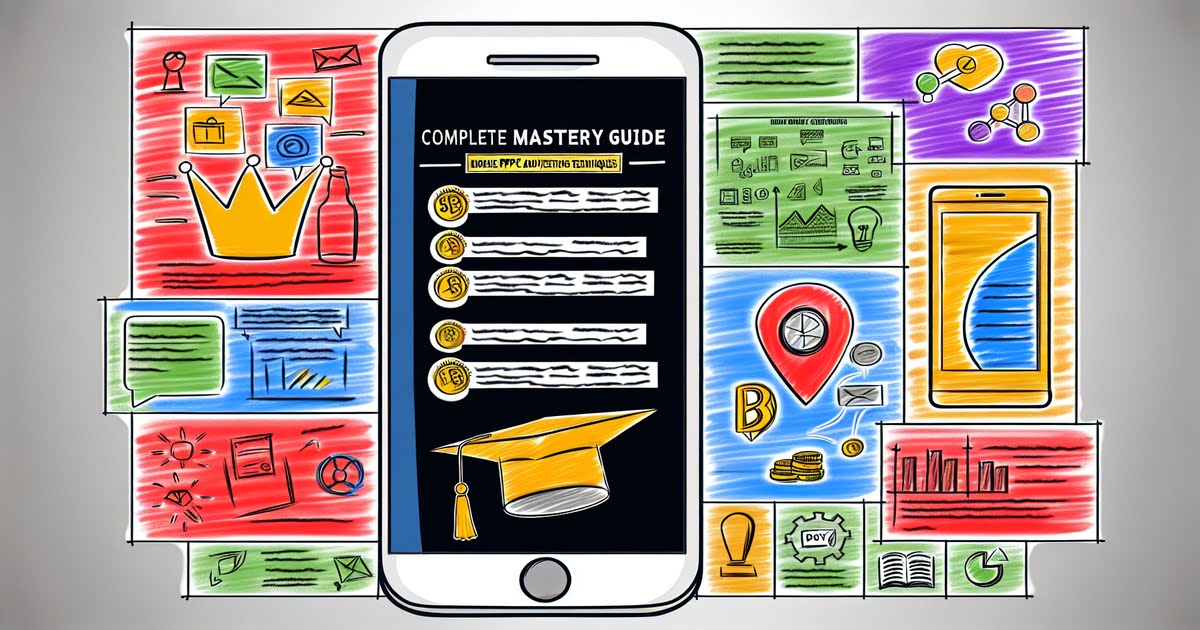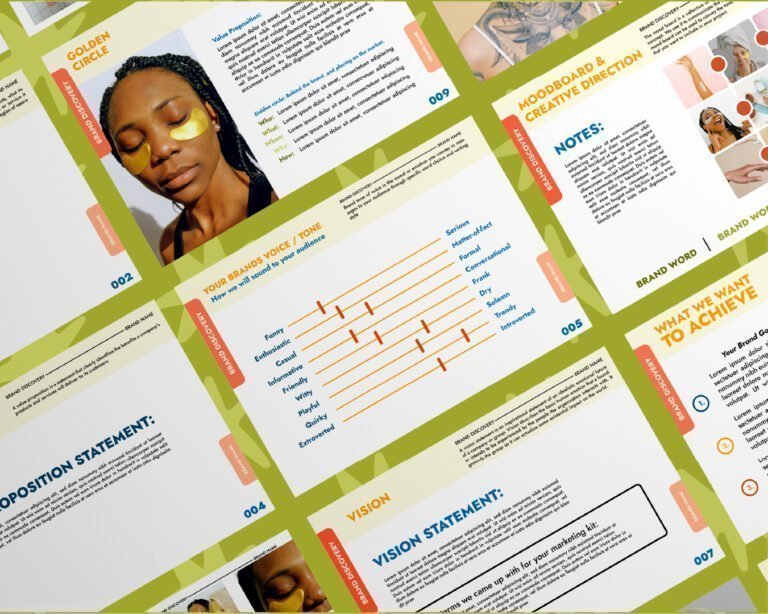In the ever-evolving digital landscape, mobile marketing has surged to the forefront, revolutionizing how brands connect with their audience. The inception of smartphones transformed advertising strategies, making mobile PPC (Pay-Per-Click) advertising techniques indispensable for businesses aiming to thrive in this competitive arena. This shift isn’t just a trend; it’s a response to the growing reliance on mobile devices for information, entertainment, and shopping. Navigating through these waters requires a blend of creativity, analytics, and an understanding of consumer behavior. This blog post dives into effective mobile PPC advertising techniques that can catapult your brand’s visibility and engagement rates sky-high. From leveraging geo-targeting to optimizing for voice search, we’ll explore how you can harness these tactics to make your mark in the digital world.
Key Takeaways
- Mobile PPC advertising demands a clear understanding of mobile user behavior and preferences, ensuring your campaigns are tailored specifically for mobile audiences.
- Setting up campaigns with a mobile-first mindset involves selecting the right ad formats and extensions that enhance visibility and interaction on smaller screens.
- Utilizing ad extensions and features effectively can significantly improve click-through rates by providing additional information and interactive elements directly in the search results.
- Optimizing landing pages for mobile is crucial; they should load quickly, display content correctly on various screen sizes, and have clear calls-to-action for an optimal user experience.
- Budgeting and bidding strategies for mobile PPC require a focus on cost-effectiveness and understanding the competitive landscape to maximize return on investment.
- Audience targeting on mobile must be precise, leveraging location data, device type, and user behavior to reach potential customers at the right moment and context.
- Analyzing performance data regularly and employing advanced optimization techniques are key to refining campaigns, identifying areas for improvement, and achieving sustained success in mobile PPC advertising.
- Mastery of mobile PPC advertising involves continuous learning and adaptation to new trends, technologies, and consumer behaviors, ensuring long-term effectiveness and growth of your campaigns.
Understanding Mobile PPC
Platform Choices
Choosing the right platform for your mobile PPC advertising is crucial. You have two major options: Google Ads and social media ads. Google Ads often reach a wide audience, making them great for general visibility. Social media ads let you target specific demographics more precisely.
Each platform has its own set of user demographics. For instance, younger audiences may spend more time on social platforms like Instagram or Snapchat, while a broader age range might use Google for searches. Knowing where your target audience spends their time can help you choose the best platform.
Different platforms support various ad formats too. Some are better for video ads, while others favor text-based or image ads. Matching your ad format to the platform’s strengths can improve performance.
User Behavior
Understanding how users interact with their mobile devices helps tailor your PPC strategy effectively. Most people use their phones to search for quick answers or local services.
Peak usage times vary but often include mornings and evenings during commutes or breaks in workdays. Targeting ads during these peak times can increase visibility and click-through rates.
Speaking of click-through rates (CTRs), they differ by device type as well—smartphones usually see higher CTRs compared to tablets or desktops because of the immediacy with which users want information.
Device Targeting
Not all devices perform equally in terms of conversion rates and engagement levels from mobile PPC campaigns.
Optimizing bids based on device types is smart management of your budget; smartphones might warrant higher bids due to better performance compared to tablets in most cases.
Ad creatives should also be tailored according to screen sizes—what looks good on a tablet may not translate well on a smaller smartphone screen.
Lastly, using device targeting allows advertisers to exclude non-performing devices from their campaigns entirely, ensuring that every penny spent is directed towards platforms that convert.
By incorporating insights into platform choices based on reach and user demographics alongside understanding user behavior patterns such as common search queries and peak usage times, advertisers can craft more effective mobile PPC strategies that resonate with their intended audience. Moreover, fine-tuning campaigns through precise device targeting ensures optimal utilization of advertising budgets while maximizing potential returns by focusing efforts only on high-performing channels and excluding underperforming ones.
Setting Up Campaigns
Defining Audiences
Segmenting audiences based on mobile app usage is crucial. This approach helps target users more precisely. For example, if someone frequently uses fitness apps, a sports equipment ad might catch their eye.
Utilizing location data offers deeper audience insights. It allows advertisers to tailor messages based on where users are or have been. Imagine sending coffee shop ads to people near your cafe.
Creating custom audiences from mobile website visitors maximizes re-engagement efforts. These visitors have shown interest in your product or service before. Reminding them through targeted ads can encourage conversions.
Keyword Optimization
Focusing on mobile-specific keywords is essential for reaching the right audience. Mobile searches often include words like “near me” or “open now”. Incorporating these into your strategy connects you with users actively seeking what you offer.
Voice search phrases are becoming increasingly popular in keyword strategies. With more people using voice assistants, optimizing for questions and conversational phrases captures this growing market segment.
Prioritizing long-tail keywords ensures better targeting and potentially higher conversion rates. These keywords are less competitive and more specific, making it easier to connect with interested users.
Writing Ads
Keeping ad copy concise yet compelling is key for mobile screens’ limited space. Users scroll quickly, so getting straight to the point matters a lot here.
Including a clear call-to-action (CTA) guides users on what step to take next—whether that’s visiting a website or making a purchase.
Highlighting special offers or exclusives can make your ad stand out among others. Everyone loves a good deal; showcasing yours could be the push needed for action.
Ad Extensions and Features
Call Extensions
Integrating call extensions into your mobile PPC advertising strategy is a game-changer. It allows customers to call your business directly from the ad. This feature is particularly useful for businesses that rely on phone calls, like service providers or restaurants.
Call extensions can significantly increase conversion rates. They make it easy for potential customers to reach out with just one click. Always ensure your contact number is correct and that someone is available to answer calls during business hours.
Location Extensions
Location extensions are essential for driving local foot traffic to physical stores or offices. By adding your business address, you’re not just informing potential customers about where you are; you’re inviting them in.
- Use location extensions for providing driving directions.
- Leverage location targeting along with these extensions.
This technique helps users find you easily, especially when they’re nearby and searching on their mobile devices. Remember, convenience drives action in the world of mobile browsing.
Sitelinks
Sitelinks offer more than just additional links beneath your ad; they provide direct pathways to specific pages of interest on your website. From product categories to special offers, sitelinks can guide users exactly where they want to go without extra navigation steps.
- Customize sitelinks specifically for mobile users.
- Monitor click-through rates on these links regularly.
Doing so allows you to optimize each link’s performance continually, ensuring the best possible user experience and maximizing conversion opportunities from every ad impression.
Message Extensions
Message extensions transform ads into instant communication tools by enabling users to text directly from the advertisement itself. This feature offers immediate communication options, making it perfect for time-sensitive offers or services requiring quick responses.
Personalize messages based on the content of each ad:
- Tailor welcome texts according to what the user might be interested in.
- Ensure replies are prompt and helpful.
Optimizing Landing Pages
Mobile Optimization
Mobile users expect fast, easy access to information. Ensure landing pages are mobile-friendly. This means they should look good and work well on small screens. Content must be readable without zooming in. Buttons should be big enough for fingers.
Accelerating page load times is crucial for keeping visitors engaged. A slow-loading page can drive potential customers away. Tools like Google’s PageSpeed Insights help identify what slows a page down.
Design with touch navigation in mind. Swipe gestures and thumb-friendly design make browsing easier on mobile devices. Remember, ease of use keeps people on your site longer.
User Experience
Simplify navigation for a better user experience (UX). On mobile sites and apps, complex menus can frustrate users. Keep it simple so visitors find what they need quickly.
Use responsive design techniques to ensure your site looks great on any device. Responsive design automatically adjusts the layout based on screen size. This flexibility improves UX across smartphones, tablets, and desktops.
Testing UX across different devices is important too.
- How does your site perform on an iPhone versus an Android phone?
- Is the experience consistent across various tablet sizes?
Gather feedback from real users to fine-tune the UX.
Call Tracking
Implement call tracking to measure how effective your ads are at generating phone calls. This technique uses unique phone numbers that forward calls to your business line. It allows you to track which ads lead to conversations with potential customers.
Use dynamic number insertion (DNI) for accurate tracking. DNI displays a unique phone number depending on where or how someone finds your website. This way, you know exactly which ad or keyword triggered the call.
Analyze call duration and quality for optimization purposes. Not all calls are equal:
- Short calls might indicate missed opportunities or customer confusion.
- Longer calls could suggest strong leads or successful customer service interactions.
Budgeting and Bidding
SMART Goals
Setting SMART goals is crucial for the success of mobile PPC advertising campaigns. These goals should be Specific, Measurable, Achievable, Relevant, and Time-bound. By defining clear objectives, marketers can tailor their strategies to meet these targets effectively.
For instance, a goal might be to increase app downloads by 20% within three months. This goal aligns with business objectives and provides a clear target for the campaign. Regularly reviewing performance data helps in adjusting these goals to stay on track.
Aligning SMART goals with business objectives ensures that every dollar spent on mobile PPC contributes towards broader company aims. Whether it’s increasing brand awareness or boosting sales, setting relevant goals guides your advertising efforts in the right direction.
Moreover, it’s essential to adjust these goals based on ongoing performance data. If an ad isn’t performing as expected after a month, reevaluate your strategy. Maybe you need to tweak your ad copy or refine your target audience.
Bid Adjustments
Bid adjustments are powerful tools in optimizing mobile PPC campaigns for better ROI. They allow advertisers to modify bids based on various factors like location, time of day, and device type.
Increasing bids for high-performing locations during peak times can significantly boost visibility and conversions. For example, if analytics show that most conversions happen on weekends from users in New York City using smartphones; then increasing bids for this specific scenario makes sense.
On the other hand,
- Decrease bids where ads underperform.
- Lowering bids for demographics or devices showing low engagement saves budget.
Utilizing bid adjustments optimizes CPA (Cost Per Acquisition). It ensures that you’re not overspending where returns are minimal while capitalizing on areas showing potential growth.
After optimizing landing pages as discussed earlier, it’s vital to focus next on how you allocate your budget through smart bidding strategies. These techniques ensure that each penny counts towards meeting those SMART goals set at the outset.
Audience Targeting Strategies
Remarketing
Remarketing lets you target users who have already shown interest in your app or website. This technique is powerful because it focuses on people familiar with your brand. You can customize ads based on their previous interactions. For example, if someone added a product to their cart but didn’t buy it, you could show them an ad for that specific product.
To make remarketing even more effective, use frequency capping. This ensures you don’t overwhelm users with too many ads, which can lead to ad fatigue. Frequency capping limits how often someone sees your ad over a certain period.
Audience-Centric Approach
Developing personas is key for a successful audience-centric approach. Look at mobile usage patterns to create detailed profiles of your target customers. Consider factors like what apps they use and when they’re most active online.
Once you have these personas, tailor your messaging and offers specifically for them. If one segment prefers video content while another likes reading blog posts, adjust accordingly. Personalized content engages users much better than generic messages do. It shows that you understand their needs and preferences.
Analyzing Performance
Key Metrics
To truly understand the impact of your mobile PPC advertising techniques, it’s crucial to dive into specific metrics. First, focus on conversion rates from mobile ads. These numbers show how effectively your ads turn viewers into customers.
Tracking the click-through rate (CTR) and cost per click (CPC) by device type sheds light on user engagement and ad cost-effectiveness. A high CTR indicates that your ad is relevant to your audience. Meanwhile, monitoring CPC helps manage your budget efficiently.
Evaluating return on ad spend (ROAS) across mobile campaigns is also essential. This metric tells you if the money spent on ads brings in sufficient revenue. It helps justify investments in mobile PPC strategies.
Desktop vs Mobile
Comparing performance metrics between desktop and mobile campaigns reveals valuable insights. Each platform has unique characteristics affecting user behavior and campaign effectiveness.
Adjust content and design strategies based on these differences to optimize results. For example, mobile users prefer quick, easy-to-read information due to smaller screen sizes.
Recognize that user intent varies significantly between desktop and mobile searches. Mobile searches often indicate immediate needs or local interests, while desktop searches might be more research-oriented.
Advanced Optimization Techniques
Ad Copy Crafting
Crafting compelling ad copy is crucial in mobile PPC advertising. Testing different versions of your ad copy can reveal what resonates best with your audience. It’s about finding the right words that click with potential customers.
Imagine two ads for the same product. One says, “Buy now,” while the other says, “Limited offer: Buy now and save!” The second one creates a sense of urgency and exclusivity. That’s what you aim for in mobile ads.
Incorporating strong action verbs into your Calls-to-Action (CTAs) makes them more persuasive. Words like “Get,” “Discover,” and “Save” encourage users to take immediate action. They transform passive readers into active participants.
Seamless Ad Experience
A seamless ad experience ensures that there’s consistency between ads and landing pages. This means using similar language, style, and imagery across both platforms. It reduces confusion and builds trust among users.
Think about clicking on an ad for a sleek, modern gadget only to land on a page that looks outdated or unrelated. You’d likely feel misled and bounce back immediately—minimizing this disruption aids in guiding the user smoothly from ad to purchase.
Aligning messaging across all touchpoints reinforces your brand message at every step of the customer journey. Whether it’s through email marketing, social media posts, or PPC ads; consistent messaging strengthens brand recall.
By implementing these advanced optimization techniques in mobile PPC advertising campaigns, advertisers can significantly improve their chances of converting prospects into paying customers. The key lies not just in analyzing performance but also continuously refining every element—from crafting irresistible ad copies to ensuring a seamless transition from ad click to purchase completion.
Mastery Strategies for Campaign Improvement
Attribution Challenges
Attribution in mobile PPC advertising can be like trying to solve a puzzle with pieces constantly moving. Cross-device attribution issues are common. Users might see your ad on mobile but switch to desktop before making a purchase. This makes it hard to track where conversions really come from.
To tackle this, consider using multi-touch attribution models. These models give credit to various touchpoints in the customer’s journey. They show how each interaction contributed to the final decision.
Also, move beyond last-click attribution. It credits the final click before conversion but ignores all previous interactions. By measuring beyond last-click, you understand the full impact of your campaign across devices and channels.
User Journey Differences
The path users take on mobile is different from desktop journeys. On mobile, they might prefer quick information or local searches due to being on-the-go.
Map out distinct paths taken by mobile versus desktop users. Recognize that someone browsing on a smartphone at lunch might not be ready to buy yet compared to someone researching extensively on a laptop at home.
Customize funnel stages based on device usage:
- Awareness: Mobile ads could focus more on capturing attention quickly.
- Consideration: Provide easy access to detailed information for those researching deeper.
- Decision: Ensure smooth checkout processes for mobile users ready to convert.
Adapt strategies according to user journey insights gained:
- Tailor content and calls-to-action (CTAs) for different stages depending on whether they’re likely viewing via mobile or desktop.
Understanding these differences allows you tailor your mobile PPC advertising techniques more effectively, ensuring better engagement and conversion rates from your campaigns.
Final Remarks
Diving into mobile PPC advertising is like embarking on a thrilling road trip. You’ve got your map (Understanding Mobile PPC), the car’s been prepped (Setting Up Campaigns), and you’re using all the best gadgets to make the journey smoother (Ad Extensions, Features, Optimizing Landing Pages). Along the way, you’re managing your fuel efficiently (Budgeting and Bidding) and picking up passengers who are genuinely interested in your adventure (Audience Targeting Strategies). The ride gets smoother as you learn to navigate better (Analyzing Performance, Advanced Optimization Techniques), and eventually, you’re cruising like a pro (Mastery Strategies for Campaign Improvement).
Remember, every twist and turn offers a chance to learn something new. Keep tweaking, testing, and tuning into your audience’s needs. Your mobile PPC journey is unique – own it! Ready to rev up your campaigns and drive results that matter? Let’s hit the road and make some waves in the digital world. Happy advertising!
Frequently Asked Questions
What is Mobile PPC?
Mobile PPC, or Pay-Per-Click on mobile devices, is like having a mini billboard in the palm of your hand. It’s advertising targeted to users on smartphones and tablets.
How do I set up a Mobile PPC campaign?
Setting up a campaign is pretty straightforward: choose your platform (like Google Ads), define your audience, pick keywords, write your ad, and set a budget. Think of it as setting up a lemonade stand where everyone walking by loves lemonade.
Can Ad Extensions improve my Mobile PPC ads?
Absolutely! Ad extensions are like adding sprinkles to ice cream—they make everything better. They provide extra info and links directly in your ads, making them more useful (and clickable) to potential customers.
Why is optimizing landing pages important for Mobile PPC?
Optimizing landing pages ensures that once someone clicks on your ad, they land on a page that’s as welcoming as a warm hug. It should be fast-loading, easy to navigate on mobile devices, and clearly aligned with the ad’s promise.
How should I approach budgeting and bidding in Mobile PPC?
Think of it like an auction where you’re buying visibility for potential customers. Start with what you can afford without breaking the bank but be ready to adjust based on performance data. It’s all about finding that sweet spot between spending wisely and getting results.
What are some effective Audience Targeting Strategies for Mobile PPC?
Imagine throwing darts at balloons filled with prizes—targeting lets you aim at the balloons most likely to give you rewards. Use demographics, interests, locations, and even times of day to make sure those darts hit the right spots.
How do I analyze my Mobile PPC campaign’s performance?
It’s like checking the score after each quarter of a basketball game; look at metrics such as click-through rates (CTR), conversion rates, cost per acquisition (CPA), etc., regularly. This helps you know if you’re winning or need to change tactics.









